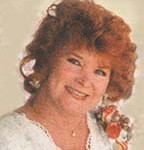Furniture – So many choices. so many “sales” – So many prices, It’s so hard to really understand what to buy- it all looks good but how do you know what to buy, or when you’re getting a good piece of furniture at a good price?
Let us first begin by a trip to the lumber yard. Here we find a large assortment of what furniture is usually made of. There are soft woods like Pine and Cedar, then hard woods like Maple, Oak, Ash, Parawood, Cherry, Alder, Birch, etc. What makes a hard wood? Any tree that loses its leaves in the winter, also called a deciduous tree. Softer woods like Pine and Cedar also make beautiful furniture. There are 365 different known Pine trees. They come from all over the world. Some Pines are harder than others; some have knots, some clear, some yellow, etc. Pine is beautiful when finished.
Pine can be distressed and over the years of service the more you beat it up the better it looks. It can always be sanded and smooth again and will serve you well. Years ago Ethan Allen started a whole business with Pine. Pine was beautiful then and still is. Oak made its big debut and then everyone wanted it. For about the last 12 years people who said only real wood would do, got a little tired of waiting in line for Oak. Pine which never did lose its place became real big again.
Alder, a softer wood of the hardwoods, grown abundantly in Oregon and Washington came in very strong and has stayed there. People like
Alders smooth grain. Many times it’s finished in a cherry stain and passed off as Cherry Wood. The salesman is talking about the color while the customer is thinking of the type of wood. Real Cherry is a very hard wood with small knots. There is also a very large amount of Knotty Alder and Knotty Maple, they are all beautiful. Now in this same lumber yard we’re touring there is another section called particle board. Let’s look at the difference in price.
Real wood versus particle board or M.D.F. (Medium Density Fiber).
Particle board or M.D.F. has its place, In your garage for shelving where the door is large and the toxic fumes can escape. It should never be in our home! It’s made with many toxic chemicals, arsenic, glue, and formaldehyde to name a few. Its toxins attach to our body and make people very sick. Look it up on the internet. Take the time, be wise, and understand what is really happening when you buy furniture made from particle board. Learn for yourself and don’t be fooled.
Particle board or M.D.F. is very inexpensive, compared to wood, and it should be. Particle board isn’t worth much! Get it wet it crumbles and falls apart. Particle board can’t be repaired, is unhealthy, scratches easy, can’t be sanded out, get the picture?
Why is so much furniture made from particle board? The real answer is huge mark up! People don’t know the difference and they don’t know how to tell the difference from real wood and particle board. They cover it up with a picture of wood grain, it looks so perfect. Real wood is not perfect, each piece is unique, it’s like “a finger print. If a piece of furniture is 22% real wood a salesperson can say it’s real and get away with it. Buying a table, the legs can be real the top particle board, they are counting on you not to know the difference. Sales people are good at making it look good they have to be, remember the huge profit. People want low prices so they think they are getting a bargain in particle board. After all it serves its purpose, and who is going to tell the customer that they’re not getting a bargain, the people who sell it? “I don’t think so.” They know they will have to buy more furniture when it falls apart, just like bread and milk you keep replacing it.
By the time people figure out what has happened, they can’t afford the price of the real wood furniture they should have bought in the first place.
